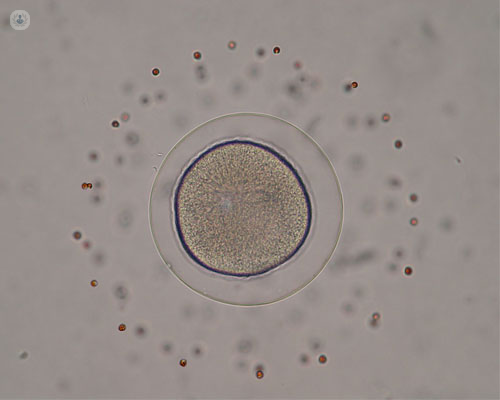Being a mother thanks to the solidarity of ova donation
Written by:Thanks to the donation of ovules, many couples with infertility problems manage to have children. Despite what is believed, the donation of ovules is a painless process and although the requirements to be a donor are quite demanding, any young woman in good health is a good candidate.
Almost 30 years have passed since the first child was born in 1984, conceived thanks to the donation of oocytes.
There are many women who have been able to achieve the dream of being mothers, thanks to the altruistic, solidary and anonymous donation of another woman. Clinically, we call the recipient of oocytes all patients who receive donated ovules .
There are several reasons why a woman has to resort to the donation of oocytes in order to get a pregnancy:
- The failure of other assisted reproduction treatments .
- The advanced age, very related to a worse reproductive prognosis with own ovules.
- Having menopause.
- The possibility of transmitting a hereditary disease to your child and not wanting to assume that risk.

Who can be a donor?
At FIVMadrid we select meticulously the egg donors , after a medical and psychological interview. They must be between 18 and 35 years old, healthy and have no family history of transmissible genetic disease. An analysis is made with general analytical, serology, karyotype, cytology and ultrasound and when everything is normal, they begin a treatment of ovarian stimulation, with follicular puncture under sedation, to be able to donate their gametes.
The recipient does an endometrial preparation treatment that lasts between 15 and 45 days and is synchronized with her donor, trying to respect the phenotypic similarity. Once the ultrasound is verified that there is a good endometrium, the recipient is waiting for the donation over the following days.
On the day of the donor's follicular puncture the oocytes are fertilized with the sperm of the couple or the semen bank. The resulting embryos are observed and evaluated in the laboratory for 2 to 5 days after transferring 1 or 2 into the uterus, through a simple and painless process.
High percentage of success
When using ovules of young women, the success rate with this treatment is very high, many get pregnant in each fresh cycle and this result is independent of the age of the receiving woman. In Spain, you can be an egg recipient until age 50.
The experience of women who have achieved pregnancy after this treatment is usually very satisfactory. It is not proven that children born after oocyte donation have more problems than the rest of the population. It is also important, according to psychologists, to tell that child in the future its origin and share it with him in a natural way.



